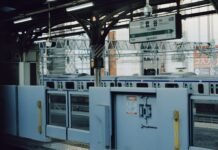
What keeps automated production lines running smoothly when speed, precision, and safety must be maintained every second? Factories are adopting smarter equipment, advanced analytics, and connected devices to improve efficiency and reliability. Even with these advancements, production still depends on technology that responds instantly and keeps processes operating at the correct pace to avoid costly errors.
Industrial Programmable Logic Controller (PLC) systems are designed to deliver this level of control. High-reliability industrial PLC systems for advanced automation control continue to fulfill this role by enabling speed, consistency, and nonstop performance across diverse environments. As industries modernize with digital technologies, PLCs remain essential in executing decisions in real time at the machine level.
8 Reasons Industrial PLC Systems Remain Core to Modern Automation
Industrial PLC systems provide the strength, speed, and security modern factories rely on. These expanded reasons highlight why they continue to lead automation strategies.
- Proven Reliability and Strong Uptime
Industrial PLC systems are purpose-built for harsh environments, including extreme temperatures, vibration, dust, and electrical noise. With built-in fault tolerance and redundancy, they continue running even when partial hardware failures occur.
This prevents costly downtime and helps manufacturers meet strict production schedules with confidence.
- High-speed and Deterministic Control
PLCs execute logic instructions in milliseconds, ensuring precise timing for fast movement applications such as robotic picking, welding, and packaging. Their deterministic control prevents errors and keeps production synchronized at high speed.

- Seamless Integration with Existing Equipment
PLCs support a wide range of industrial communication standards, including Modbus, Profibus, and Ethernet/IP. This makes it easier to connect older machines with new devices and software platforms.
Upgrades can be rolled out in phases, keeping operations stable while advancing toward digital modernization without incurring major equipment replacement costs.
- Flexible Programming for Complex Tasks
Engineers can quickly update control logic using familiar programming environments such as ladder logic, structured text, or function block diagrams. This flexibility helps teams implement improvements faster, automate more advanced workflows, and comply with evolving regulatory requirements without lengthy engineering delays.
- Scalable Architecture for Growing Businesses
As production expands, PLCs allow controlled growth. Additional, I/O modules or networked PLCs can be added without rewriting entire programs. Multiple sites can follow the same control standards to maintain consistency. Organizations scale up efficiently while preserving operational stability and process uniformity.
- Enhanced Safety and Risk Reduction
PLCs manage critical operations that protect both people and machines. Safety-rated PLCs execute emergency stops, guard interlocks, and shutdown sequences with high reliability. Automated safety logic reduces the risk of human error and improves compliance with global safety standards.
- Real-time Data Intelligence
Industrial PLC systems continuously monitor sensors, motors, and production data. Operators receive instant alerts when performance drops, enabling quick correction before issues escalate. Maintenance teams analyze trends to prevent failures and improve efficiency. Electric control works together with PLC logic to ensure accurate responses at the exact moment action is needed.
- Long Lifecycle and Efficient Maintenance
PLCs typically operate for decades with minimal hardware changes. Built-in diagnostics help technicians identify the root cause of issues faster. Standardized modules and condition monitoring help reduce maintenance hours and improve overall equipment effectiveness across every production line.
These capabilities make PLCs a strategic, long-term investment for automation excellence.
Building the Future of Safe and Smart Production
Modern automation must support safe, flexible, and energy-efficient operations while enabling fast responses to change. Industrial PLC systems deliver this strength by combining proven stability with digital connectivity for real-time control. They help maintain productivity, support high-quality output, and simplify system coordination throughout every shift.
As factories adopt advanced automation, PLCs remain the central link connecting machines, data, and operational decisions. Partnering with a reputable electric brand ensures secure integration, expert guidance, and reliable system upgrades over time.
Take the next step toward smarter automation. Request a consultation to explore how Industrial PLC systems can improve control, safety, and operational efficiency in your facilities.



































